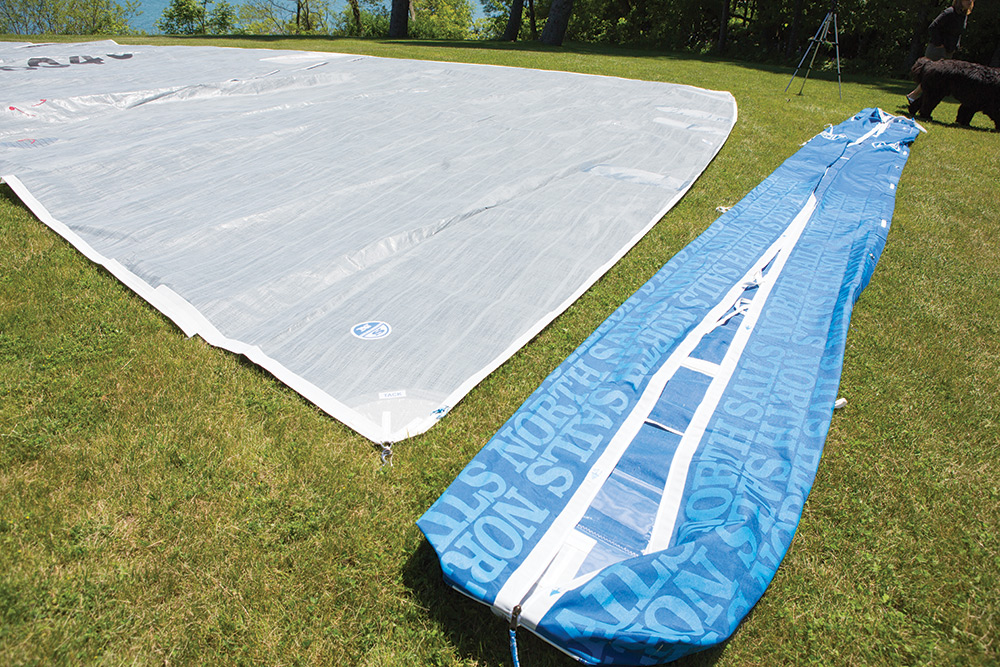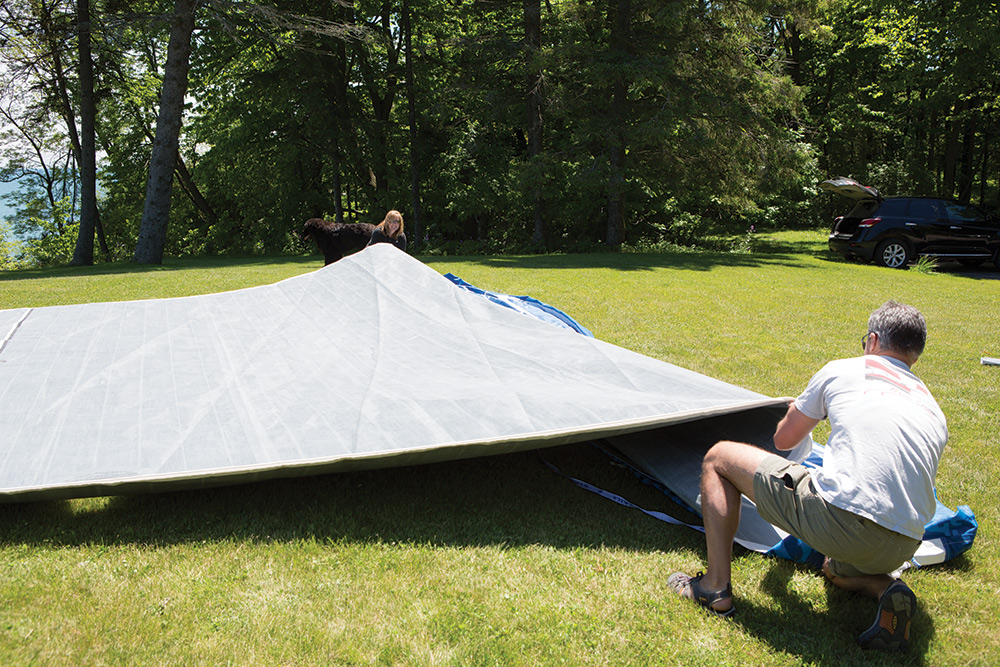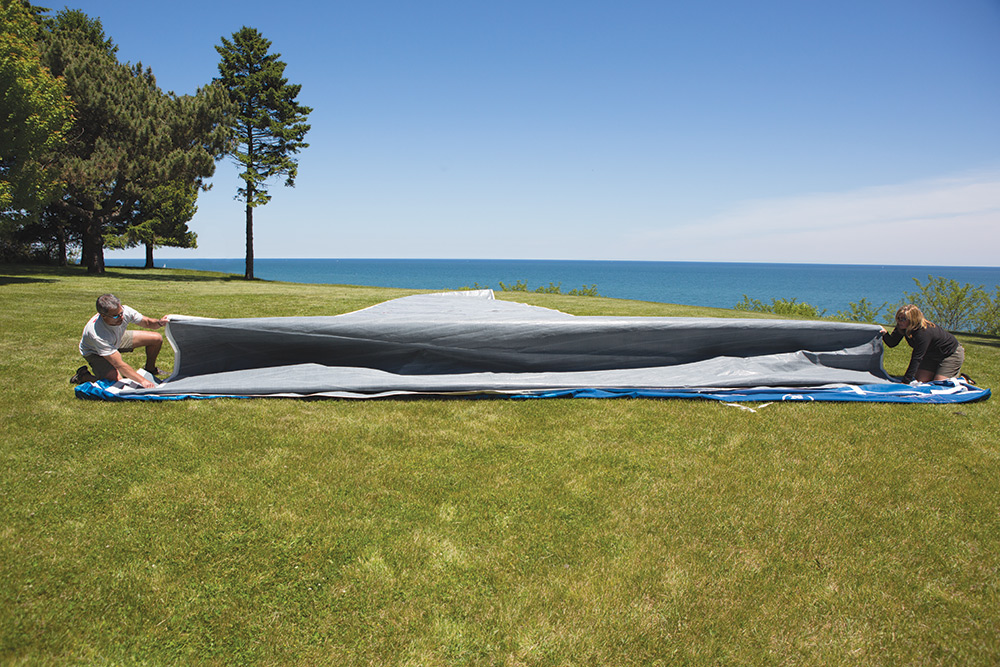How to fold a sail
Know how to perform this sailing basic correctly for better sets and the admiration of crewmates

Folding a sail is a task that sailors do every day, on the dock or on the deck, and while it won’t make or break you as a sailor, knowing how to fold a sail correctly will make your sails last longer, make them easier to set and ingratiate you to the rest of the crew.
Sails are an investment and folding them properly is important to their longevity. Folds and creases stress the fibers of sailcloth, so you want to make neat folds that will lay flat in the bag rather than messily stack them on top of each other. This is more easily done on land than on a pitching, heaving foredeck, but sail-folding basics can help even when the primary concern is getting a sail back in the bag and put down below.

Folding a headsail is at least a two-person job so enlist help when needed. If you’re trying to fold a sail on deck or over the lifelines onto the dock, grab a few additional helpers to help guide the sail to the primary folders.
With one person at the tack and another at the clew, stretch the foot of the sail taut. There are a few keys to folding a sail so that it comes out of the bag easily. When you’re setting a sail you want the luff nicely stacked on top of the tack so it doesn’t stretch down the length of the bag. This will allow the sail to go up easily without having to pull the luff forward to guide it into the track. But because a sail is triangular, in order to keep the luff stacked, you need to take larger folds on the tack end and smaller folds at the clew end.

Keeping the size of folds in mind, each person grabs the sail, and the folders pull the length of sail taught against each other, then fold it over on top of the foot. The person on the luff should guide the process, offering feedback to their partner on the size of the folds. The person at the clew end will have to move as the sail is folded, while the person at the tack end shouldn’t have to worry about anything other than stacking the luff.
When you reach the head of the sail, fold the head over to lay it on top of the sail so it is easy to find. A properly folded sail should be able to be hooked up and easily set without fully opening the sail bag. If you are folding into a full-length turtle, just zip it up and go, bricking, or rolling, the sail from the clew end if necessary for storage. If you’re using a shorter turtle, you’ll have to make a small accordion fold about three-quarters of the distance from the tack, allowing the clew to still be accessible from the end of the bag. If you are bricking a sail to be stored in a bag, roll from the clew every time so you always know to start unrolling from the luff end.
The same method works for folding a mainsail on the boom, but it helps to have additional hands to hold the folds in the middle during folding. The holders shouldn’t try to help create the fold by grabbing the middle of the sail, rather let the main folders on each end create the fold by pulling the sail taught against each other. Adjust folds as necessary so that the battens lay flat on the boom.

Comments